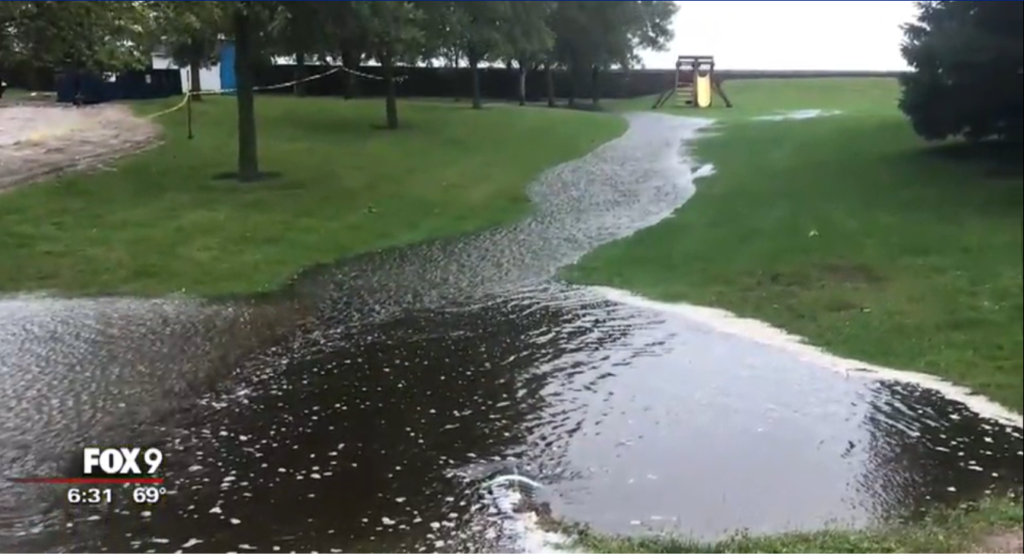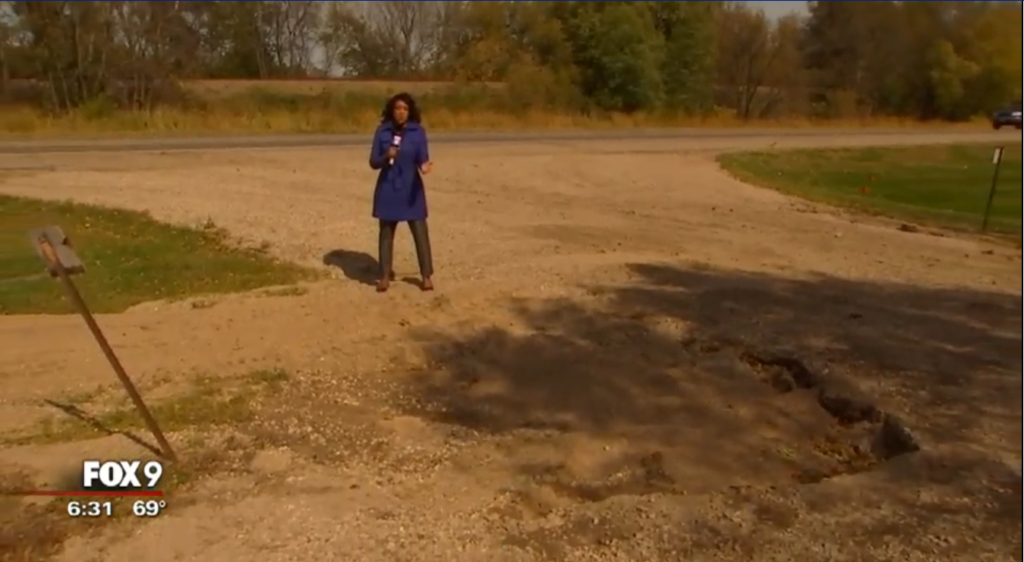Waverly Couple Says Forty Acre Solar Installation Isn’t a Good Neighbor
A couple in Waverly, Minnesota has not had a good experience with the 40 acre solar facility next door. The couple’s concerns go past normal “Not In My Backyard” sentiments that accompany almost any new development because in the case of this solar facility, the facility is actually damaging their backyard.
According to a Fox 9 news report, the basin the solar installation is built in has no outlet, so any water that is collected in the 40 acre facility runs off through the backyard of Mike and Carol Wren. The Wrens told Fox 9 that the solar installation is supposed to have a buffer between their property and a proper outlet for rainwater. The solar installation has neither of these features.

This isn’t just a temporary inconvenience to the Wren family in the event they may want to barbecue in their backyard on a summer evening in Minnesota, the Wren’s allege the runoff is washing out the brand new gravel driveway the family had installed this summer.

According to the Minnesota Pollution Control Agency’s (MPCA) Stormwater Manual, all construction projects disturbing one or more acres of land must apply for the National Pollution Discharge Elimination System stormwater permit for construction activities, issued by the MPCA.
According to an MPCA factsheet for stormwater runoff for solar facilities:
“In addition to the permanent stormwater management system, the NPDES permit requires the use of best management practices (BMPs) during the construction project as well. These BMPs include sediment control practices, which prevent mobilized sediment from leaving the site, and erosion prevention practices, which prevent the mobilization of sediment in the first place.”
Considering the runoff from the solar facility is leaving the site, running through a neighboring property, and eroding their driveway, it does not appear this facility is in compliance with Minnesota stormwater management standards.
If this were a mining facility or limestone quarry, every environmental organization in the state would be up in arms suing the facilities and using it as an opportunity to fundraise, but it appears solar facilities are held to a different, lower standard.
Environmental protection laws exist to protect the environment. The regulations should be science based, and they should be agnostic as to the type of project being proposed, not discriminate based on whether the project is politically popular or not.
The politicization of the environmental review process in Minnesota has led to the unnecessary delay of projects like the Line 3 replacement project, which would benefit the environment by replacing a corroding pipeline with a new pipeline with state-of-the-art technology, greatly reducing the chances of environmental harm. This politicization has also allowed politically popular projects, like the Waverly solar installation, to avoid scrutiny to the detriment of Minnesota families and the environment.
It appears we are indeed living in Two Minnesota’s. One where politically unpopular projects are unnecessarily saddled with much higher standards to meet than those that curry favor for liberal legislators in St. Paul.